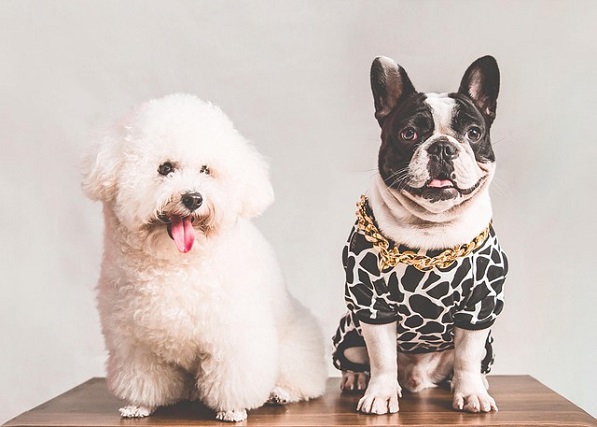Finding crusty buildup inside your dog’s ears can be worrying—those delicate folds are prone to irritation, and ignoring them might lead to bigger issues. Whether it’s flaky skin, sticky discharge, or rough patches, understanding the cause is key to gentle, effective care. Let’s explore how to help your pup without stress.
First, resist the urge to pick or pull at the crusts. Dog ears are sensitive, and forcing debris out can scratch the skin, causing pain or infection. Instead, start by observing the crust’s appearance: dry and flaky might signal allergies or dry skin, while wet, smelly, or yellowish crusts often point to infections (bacterial, yeast, or mites). Note any other signs—head shaking, scratching, or a foul odor—to tell your vet.
Step 1: Schedule a vet visit immediately. Crusty ears rarely heal on their own, and home remedies like hydrogen peroxide or olive oil can worsen irritation. Your vet will examine the ear canal, possibly take a sample to test for bacteria, yeast, or mites, and prescribe safe treatments. In the U.S., the AVMA stresses that only licensed veterinarians should diagnose ear issues to avoid misusing medications.
Step 2: Clean gently under vet guidance. If your vet approves at-home cleaning (after identifying the cause), use a dog-specific ear cleanser—never human products. Gently wipe the outer ear flap with a damp, soft cloth to remove loose crusts, then apply the cleanser as directed. For deep-seated debris, the vet might soften it with medicated drops before safe removal—never attempt this yourself.
 Step 3: Treat the root cause. Bacterial or yeast infections need prescription ear drops or oral meds. Ear mites (common in puppies or outdoor dogs) require anti-parasitic treatments for your pup and their environment (wash bedding, vacuum rugs). Allergies might mean switching to hypoallergenic food or medicated shampoos—your vet will tailor a plan based on tests.
Step 3: Treat the root cause. Bacterial or yeast infections need prescription ear drops or oral meds. Ear mites (common in puppies or outdoor dogs) require anti-parasitic treatments for your pup and their environment (wash bedding, vacuum rugs). Allergies might mean switching to hypoallergenic food or medicated shampoos—your vet will tailor a plan based on tests.
What to avoid at all costs: Never use cotton swabs, Q-tips, or harsh chemicals in the ear canal. These can damage the eardrum or push bacteria deeper. Over-the-counter “ear mite remedies” without vet approval often contain harmful ingredients, and ignoring chronic crusting (common in breeds like Bulldogs or Golden Retrievers) can lead to permanent scarring or hearing loss.
Preventing future crusting: Make weekly ear checks part of your routine, especially for floppy-eared or long-haired breeds. After baths or swimming, dry ears thoroughly with a vet-approved drying solution to prevent moisture buildup. If allergies are the culprit, keep their living space dust-free and avoid known triggers like certain plastics or cleaning products.
Caring for sensitive ears: Some dogs develop crusts from chronic scratching due to anxiety or pain. If your pup’s ears seem sore, ask your vet about gentle anti-itch meds or protective cones to prevent self-injury. Patience is key—rushing the process can stress your dog and slow healing.
Remember, crusty ears are your dog’s way of saying “something’s not right.” By seeking professional help first, you’re ensuring safe, effective treatment instead of guessing at solutions. Every gentle wipe and vet-recommended step shows your pup you’re there to protect them, turning a stressful situation into a chance to nurture their comfort.
With the right care, those crusty patches will fade, and your dog’s ears will feel light and itch-free again. Trust your vet’s expertise, stay consistent with treatments, and focus on creating a calm, supportive environment. Your pup’s happy, healthy ears are worth every cautious, caring step—you’re doing exactly what they need.

 Step 3: Treat the root cause. Bacterial or yeast infections need prescription ear drops or oral meds. Ear mites (common in puppies or outdoor dogs) require anti-parasitic treatments for your pup and their environment (wash bedding, vacuum rugs). Allergies might mean switching to hypoallergenic food or medicated shampoos—your vet will tailor a plan based on tests.
Step 3: Treat the root cause. Bacterial or yeast infections need prescription ear drops or oral meds. Ear mites (common in puppies or outdoor dogs) require anti-parasitic treatments for your pup and their environment (wash bedding, vacuum rugs). Allergies might mean switching to hypoallergenic food or medicated shampoos—your vet will tailor a plan based on tests.



